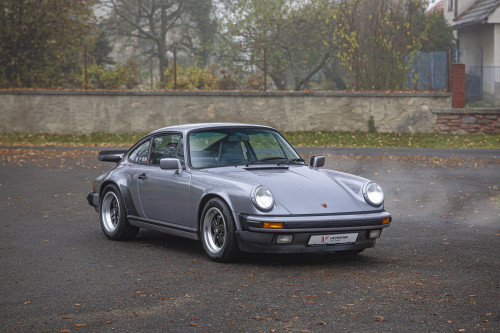By the early 1960s, road car production had ceased to be a sideline for Ferrari and was seen as vitally important to the company's future stability. Thus the 250, Ferrari's first volume-produced model, can be seen as critically important, though production of the first of the line - the 250 Europa, built from 1953 to '54 - amounted to fewer than 20. Before the advent of the Europa, Ferrari had built road-going coupés and convertibles in small numbers, usually to special customer order using a sports-racing chassis as the basis. Ghia and Vignale of Turin and Touring of Milan were responsible for bodying many of these but there was no attempt at standardisation for series production and no two cars were alike.
The introduction of the 250 Europa heralded a significant change in Ferrari's preferred coachbuilder; whereas previously Vignale had been the most popular carrozzeria among Maranello's customers, from now on Pinin Farina (later 'Pininfarina') would be Ferrari's number one choice, bodying no fewer than 48 out of the 53 Europa/Europa GTs built. Pinin Farina's experiments eventually crystallised in a new Ferrari 250 GT road car that was first displayed publicly at the Geneva Salon in March 1956. However, the Torinese carrozzeria was not yet in a position to cope with the increased workload, resulting in production being entrusted to Carrozzeria Boano after Pinin Farina had completed a handful of prototypes.
True series production began with the arrival of Pininfarina's 'notch back' Coupé on the 250 GT chassis, some 353 of which were built between 1958 and 1960 within the sequence '0841' to '2081'. However, the relatively small scale of production meant that cars could still be ordered with subtle variations according to customer choice, as well as enabling a handful of show cars and 'specials' to be constructed on the 250 GT chassis.
A number of important developments occurred during 250 GT production: the original Colombo-designed 128C 3.0-litre engine being superseded by the twin-distributor 128D, which in turn was supplanted in 1960 by the outside-plug 128F engine which did away with its predecessor's Siamesed inlets in favour of six separate ports. On the chassis side, four-wheel disc brakes arrived late in 1959 and a four-speeds-plus-overdrive gearbox the following year, the former at last providing the 250 GT with stopping power to match its speed.
More refined and practical than any previous road-going Ferrari, yet retaining the sporting heritage of its predecessors, the 250 GT is a landmark model of immense historical significance. According to Martin Buckley (Classic & Sports Car, February 2014), of the 350 built, only 68 Series I and 83 Series II cars survive.
This example was completed at Pinin Farina's Grugliasco works on 9th January 1959 and is the 118th of the 353 cars built. Originally finished in two-tone Bianco Savid (bottom) and Grigio Conchiglia (top) with Nero part-leather interior, chassis number '1247' is a 'Series I' model equipped with the Tipo 128D engine, disc brakes, and aluminium doors, bonnet, and boot lid. Later in 1959, the Ferrari was sold new to Andre Vanoni in Algeria, subsequently passing to Paul Saurin, who kept it for 23 years before selling it to Pierre Marie Knoll. Mr Knoll sold '1247' to the current vendor in 2012.
During 2012/2013, the Ferrari was restored (interior and exterior) by Espace Century of Wissous, France before participating in the 2013 Tour Auto Optic 2000, run from Paris to La Rochelle. Competitor number 'VIP2', the car completed the 2,025-kilometre, five-day event without problems, and the following year participated in the XIII Modena Cento Ore Classic.
Finished in Ferrari Rubino Rosso with black interior, '1247' represents a wonderful opportunity to acquire an example of this landmark, yet undervalued, Ferrari GT that helped cement Maranello's continuing relationship with Carrozzeria Pininfarina. Accompanying documentation consists of a Massini Report, restoration invoices and photographs, and a French Carte Grise.
| Production date | 09.01.1959 |
|---|---|
| Body Type | Coupe |
| Engine | 2.953 ccm, 240 PS, V12 |
| transmission | Manual |
| Steering | Left Hand Drive |
|---|---|
| Layout | Rear Wheel Drive |
| Color - exterior | Ferrari Rubino Rosso |
| Color - interior | Black leather |
| Miles/Kilometers shown | 95.180 kms |
|---|---|
| Chassis / VIN | 1247 GT |
| Location - Country | Czech Rep. |
| Location - City | Prague |
2-door coupe body type; RWD (rear-wheel drive), manual 4-speed gearbox; gasoline (petrol) engine with displacement: 2953 cm3, advertised power: 176.5 kW / 237 hp / 240 PS (max), torque: 265 Nm; characteristic dimensions: outside length: 4400 mm, width: 1650 mm, wheelbase: 2600 mm; reference weights: estimated curb weight: 1150 kg; top speed: 203 km/h (126 mph) (declared by factory); accelerations: 0-60 mph 6 s, 0-100 km/h 6.4 s (declared by factory)

Písek, Czechia

Jablonec nad Nisou, Czechia

Jablonec nad Nisou, Czechia

Písek, CZ

Písek, CZ

Písek, CZ